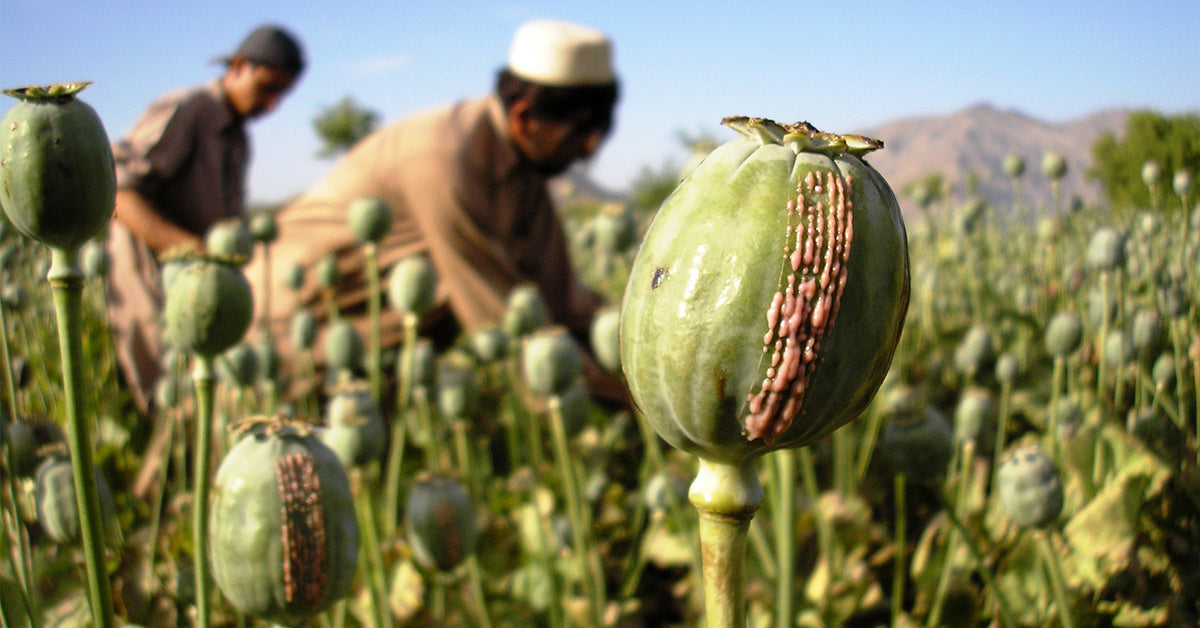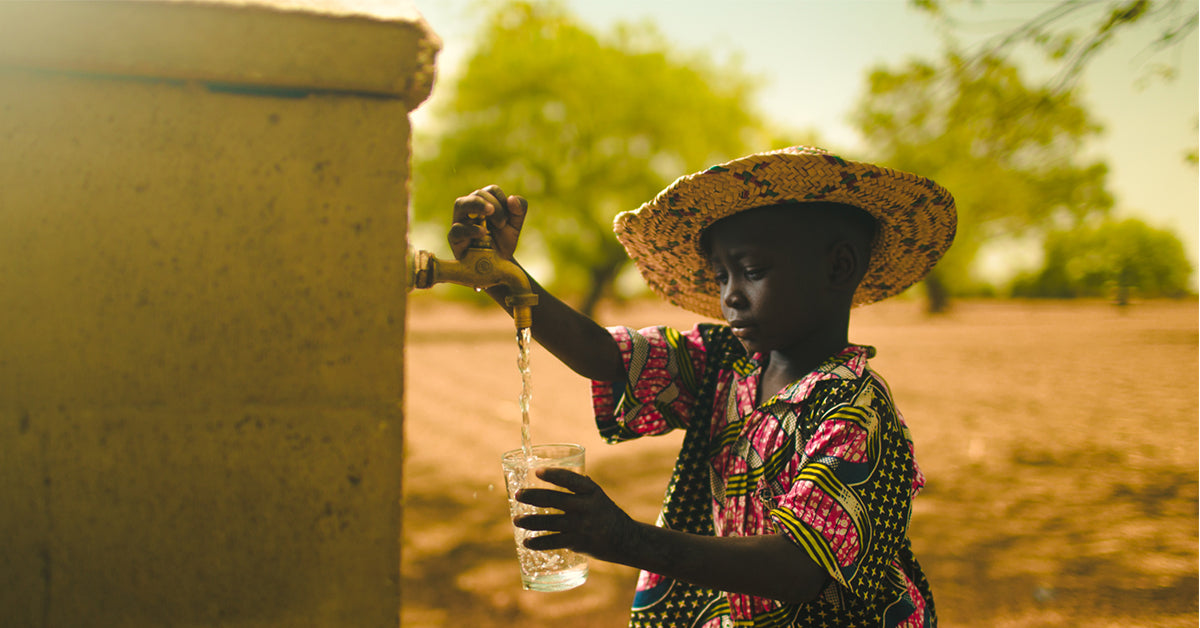It can’t be helped: the word “bubbles” is a happy word. Blowing bubbles as a kid (or a grownup). The fun of bubble baths as a child or the luxuriousness of one as an adult. The fun of blowing a big bubble with bubble gum, and the celebration of champagne bubbles. Why should bubble tea be any different? (It isn’t!)
Bubble tea is also known as pearl milk tea, bubble milk tea, tapioca tea or simply boba (here in the U.S., it is more commonly known as “bubble tea” on the East Coast and “boba” on the West Coast) and has its origins in Taiwan. The story of bubble tea is interesting, complete with a bit of whodunnit.
A Bubble Tea Origin Story
A key ingredient of bubble tea are the tapioca pearls that huddle up at the bottom of the cup. These pearls are made from tapioca starch, which is derived from the cassava plant. This South American plant was brought to Taiwan during its period of Japanese rule, sometime between 1895 and 1945. At some point, people began boiling these hard, tasteless pearls and then steeping them in a sugary caramelized syrup. Before you know it, those hard, tasteless pearls were transformed into chewy, sweet black tapioca pearls also referred to as “boba.”
For a time, these tasty treats were used primarily as dessert toppings. Milk tea, meanwhile, was already hugely popular in Taiwan. How the two came together, however, is still not exactly known. What is known is this concoction came into being in the 1980s. But by whom? Was it Lin Hsiu Hui, a product manager at the Chun Shui Tang tea shop in Taichung, Taiwan, who dropped the pearls into her iced tea in the middle of a meeting and started a trend? Or was it the owner of the Hanlin Tea Room in Tainan, Taiwan? In other words, we know bubble tea was created in Taiwan in the 1980s… we just don’t know if it was in the Chun Shui Tang shop during a moment of boredom or in the Hanlin Tea Room during a moment of inspiration.
(To make bubble tea even more fascinating, it is said that the name “boba” refers to a 1980s Hong Kong actress named Amy Yip whose nickname, Boba, means “champion of breasts.” We can’t make this stuff up, folks.)

Making a Classic Bubble Tea
The original bubble tea consists of black tea, milk, syrup or honey and tapioca pearls. It is most often shaken with ice in a cocktail shaker and poured into a cup. While many establishments will serve it with a plastic lid, more authentic shops will serve it with a sealed cellophane covering that allows you to shake the bubble tea, thus creating bubbles at the top of the drink. Simply poke a hole through the cellophane with the large bubble tea straw and slurp away!
Making a classic bubble tea at home really is as easy as making an 8-ounce cup of tea, letting it cool, boiling your tapioca pearls (follow the directions on the package), let them cool, combine both with milk or any milk substitute of your choice, add any sweetener you wish, shake with ice and enjoy! Our Bubble Tea set with Paris and Milky Oolong teas or our Tropical Mango Bubble Iced Tea set make DIYing bubble tea a breeze. The reusable tapioca pearl-sized stainless steel straws are a must-have if you’re going to enjoy bubble tea at home; you’ll go cross-eyed trying to suck those pearls through a regular straw, trust us!
About Those Pearls
The typical tapioca pearls used in bubble tea are black; the color comes from having been steeped in brown sugar. The pearls can come in many colors and sizes. One variation known as “popping pearls” is made from a seaweed extract with fruit juice inside that “pops” when you bite into it.
Chewiness is a texture that is popular in Taiwan. Referred to as “Q” or “QQ” (think XL chewy) in products throughout Taiwan, the chewy factor of the tapioca balls is integral to the uniqueness and popularity of this drink’s origins.
The cassava roots that the boba tapioca starch comes from contains calcium and vitamin C. Before you think that this makes bubble tea a healthy drink, however, make sure you know how much sugar is in yours.

Bubble Teas Can Be Loaded in Sugar
When ordering bubble tea in a store, you are often given the choice of your sugar level. If not, you should be able to ask about how much sugar is in the drink and ask for less (or more) if desired. You can also order how much ice you want. Make sure you get the drink you want.
Here’s a guide to ordering your preferred quantities of sugar and ice-- both here in the U.S. and just in case you happen to be in Taiwan:
- Quán táng (全糖) - Full sugar
- Shǎo táng (少糖) - Less sugar
- Bàn táng (半糖) - Half sugar
- Wēi táng (微糖) - Some sugar
- Zhèngcháng bīng (正常冰) - Regular ice
- Shǎo bīng (少冰) - Less ice
- Qù bīng (去冰) - No ice
- Wēn yǐn (溫飲) - Warm
- Rèyǐn (熱飲) - Hot
Upping Your Bubble Tea Game
If you’re interested in going beyond the classic bubble tea, you’re not the only one. Dozens of variations of this beverage exist.
At home, you can simply add powdered flavors or syrups. You can also add flavor by using a flavored tea, like one of our fruity iced tea flavors, or something more desserty like Chocolate Mint, zingy like Ginger Liquorice, or peppy like White Peach Matcha. Or check your pantry and see what looks like a good candidate for bubble tea!

Other bobas you can find in specialty bubble tea shops include but are not limited to:
- Brown Sugar Boba Tea. Take brown-sugar soaked tapioca pearls and add more brown sugar to the entire drink. The Rolling Stones would totally love it.
- Everything But the Kitchen Sink Boba Tea. If you can think of it, you can add it to bubble tea. Various jellies (including aloe vera jelly), chia seeds, panna cotta, sweet potato balls, adzuki beans, tropical fruits, azuki, egg pudding and so much more. To paraphrase Captain Brody in the movie “Jaws” -- we think you’re gonna need a bigger straw.
- Juice Bubble Tea. Don’t like milk products? No problem? You can order or make yours with juice products.
- Taro Milk Tea. This purple-hued bubble tea incorporates taro, a root vegetable, and not Taro cards like you might have initially thought.
In short, while bubble teas have been and remain enormously popular in Taiwan and other Asian countries, they have exploded on the Western scene-- and for good reason. They’re just one heckuva happy, adventurous drink! Grab yourself a big straw and get your bubbles on.
















8 comments
Gycel
This is such a fun read! I had no idea about the fascinating history behind bubble tea and the different types of pearls. I’ve been experimenting with making bubble tea at home and found some useful tips and ingredients at sites like Hoja Food. It’s great to see how something so enjoyable has such an interesting backstory. Thanks for sharing all these details!
This is such a fun read! I had no idea about the fascinating history behind bubble tea and the different types of pearls. I’ve been experimenting with making bubble tea at home and found some useful tips and ingredients at sites like Hoja Food. It’s great to see how something so enjoyable has such an interesting backstory. Thanks for sharing all these details!
Rachel Monfredo
Fun read! Love bubble tea! Been making it for years with supplies from local Asian market. Thanks for the info and Chinese characters!!
Fun read! Love bubble tea! Been making it for years with supplies from local Asian market. Thanks for the info and Chinese characters!!
Lyndsey
Wow! Nice to know how easy it is. Though I’ve never seen black ‘bubbles’ before. In shops where I’ve been on the west coast, the tapioca pearls were always translucent white, like tapioca.
Wow! Nice to know how easy it is. Though I’ve never seen black ‘bubbles’ before. In shops where I’ve been on the west coast, the tapioca pearls were always translucent white, like tapioca.
Mary Alice Orito
Good to know. Now I can make Bubble tea at home…thanks
Good to know. Now I can make Bubble tea at home…thanks
ANNA BELT
I love Boba tea but not the kind made with flavored powders-yuck! Preparing the tapioca pearls was a mystery to me. Now I am excited to make Boba at home! Thank-you so much!
I love Boba tea but not the kind made with flavored powders-yuck! Preparing the tapioca pearls was a mystery to me. Now I am excited to make Boba at home! Thank-you so much!
Pete
We just made some using your Vanilla Black tea with oat milk and agave syrup. (We have a vegan in the family). Quite yummy 😋
We just made some using your Vanilla Black tea with oat milk and agave syrup. (We have a vegan in the family). Quite yummy 😋
Nina williams
This looks like fun as well as good. Keep up The good work. Miss you all and hope to see you soon again
This looks like fun as well as good. Keep up The good work. Miss you all and hope to see you soon again
Jaelithe Crislip
The cards used for fortune-telling are “tarot.” :)
The cards used for fortune-telling are “tarot.” :)